Building Educational Content Business using SMS and Java Mobile Application
Saranpong Pramsane, Ph.D.
Assumption University,
Bangkok, Thailand.
prammicester@hotmail.com
Ridwan Sanjaya
Soegijapranata Catholic University, Semarang, Indonesia.
mail2ridwan@yahoo.com
Abstract
This paper presents a business perspective of Short Message Service (SMS) content business in the educational field. The university has a lot of valuable information that students need such as grade release, enrollment information, university announcement, and internship opportunity which can be a value added services (VAS) for mobile communications.
The university has two options of architecture. The first architecture will use the independent architecture which is created by the university itself using one cell phone and one server. The next option is using the dependent service which is provided by the university and the cellular operator using one web server and 24-hour internet connection. Both alternatives have their own benefits and difficulties in different levels which depend on the institutional condition. This selection will also affect both cost and pricing in providing the service, and their performance.
This paper is aimed to develop the educational content business based on SMS. This service will support their student’s need of information based on the comparison of the architecture and its costs. Providing a Java mobile application for the GUI interface of the SMS Application stimulates users to use this service without worrying about the typographical error, the false destination number, or the wrong choice of services.
Keywords
Value Added Service, Short Message Services, SMS, Education Services, Content Provider, Cellular Phone, Mobile Phone, Content Business.
*) Published in Proceeding of The Fifth International Conference on e-Business (NCEB 2006), Bangkok, 2-3 November 2006.
**) Presented at The Fifth International Conference on e-Business (NCEB 2006), Bangkok, 2-3 November 2006.
 PDF Version [Download]
PDF Version [Download]
1. Introduction
With emerging mobile commerce, these are two different underlying technology platforms: Wireless web-based technologies, such as Wireless Application Protocol (WAP), and text-based technology or Short Message Services (SMS). The former is similar to web interface. However, the latter, in controls, is a simple user interface.
Increase in need for new and ubiquitous, mobile communications are changing the way people communicate and work. In particular, GSM is anticipated to play a major role in personal communication inquire for new services, causing new infrastructure architectures to increase at the same time [3]. These approaches assist both network operators and service providers in facilitate their task of definition, deployment and management of new services.
SMS is a basic and common feature given by cellular operators to users. Recently, the growing influence of SMS has attracted significant attention. As a convenient and low-cost mobile communication technology, SMS is experiencing very rapid growth. In 2001, 700 million mobile phone users worldwide sent an average of 20 billion SMS messages every month. Indeed, the volume of SMS messages sent in December 2001 was 30 billion worldwide and it was expected to grow to 100 billion by the end of 2002. In Europe, Norway leads the region with an average of 47 messages sent per month per user in 2001 while Philippines lead the Asia-Pacific region with 336 SMS messages [4].
The worldwide increasing growth of SMS messaging services has spurred the developments of SMS commerce applications, which mainly cover consumer-orientated business such as alerting, ticket booking and retailing. Given that the huge SMS messaging customer base could potentially serve as major component of the SMS-commerce customer base, many commerce providers are becoming more interested in SMS commerce applications.
The university as an educational organization has many valuable information which can be provided to the students, such as (1) grade release, (2) enrollment information, (3) university announcement, and (4) internship opportunity. If the university can provide them on the SMS service, the students can get the information easier and faster. They can request the information from the service provider at their own convenient time through their cell phones.
There are two kinds of services which can be built to distribute the information through SMS:
(1) Independent Service. It is created by the university itself using one cell phone and one server.
Figure 1. Independent Service
(2) Dependent Service. The university only provides one server and 24/7 internet connection. However, there is a need for an agreement between the university and the cellular operator to provide the service.
Figure 2. Dependent Service
Both of them services have their own benefits and difficulties in the different levels which depend on the institutional condition. The choice will also affect both the cost and the pricing in providing the service.
2. Technical Comparison
Even though the architecture of two services is different, both of services have the same objective to provide the information based on the user’s request. The example of the user’s request and the reply can be shown on the bellow.
Figure 3. Illustration Request and Answer
The differences between independent and dependent service is located on the data flow between users and content provider.
2.1 Independent Service
To provide independent service, the University can use 1 mobile phone or GSM modem and 1 server as an SMS server. Database server also can be connected to the SMS server to supply data. If the user sends a request through SMS, the mobile network will receives it and sends it again to the SMS server mobile phone receiver. The SMS will be processed on the SMS server.
Figure 4. Conceptual Model
SMS server will read the message from mobile phone receiver and it will compare the message and the answer from the university database. The result will be sent to the user through the mobile phone on the server (See Figure 3).
The steps of reading and sending the SMS on the server show on the Figure 5. Those steps are (1) Frequently, server will check the SMS from the mobile phone and translate from PDU format into plain text. In the PDU mode, a complete SMS Message including all header information is passed as a binary string [4]. (2) The translation message will be read and divide into three parts (Student ID, Password, and Keyword). Then, the Student ID and Password will be compared with data on the Authentication table. (3) If match, the system will check the balance. But if not match, the SMS will be ignored. (4) If there are enough points to be used, the system will process the request and compare the keyword with the available services. If not available, system will send a SMS warning to the user. Otherwise, the system will query the answer from the database, (5) translate from plain text into PDU format, and (6) send the answer back to the user.
Figure 5. Reading and Sending SMS
Before students can use the services, they must pay the services through the website. (1) Students can pay the services using credit cards or bank transfer. Based on the payment, user will get points or add the user’s balance which will be used to use the services. (2) After that, students can use the services and send the request to the SMS server. SMS server will check the ID and password and compare to the student database. (3) If the ID and password are correct, server will check user’s balance. If there are enough points, server will check the answer based on user’s request. (4) The answer will be sent to the user and the user’s balance will be deducted.
Figure 6. A whole processes on the system
E-Commerce Website has to be provided to facilitate payment system for the services. The process of payment system can be the following steps: (1) Students pay the services through the website. (2) If students use credit cards, the payment will be processed at Payment Processing Center, (3) Merchant, and (4) accepted by Cardholder’s bank.
Each successful payment is done by users keeping adequate balance. It will be used for getting the information from the SMS services.
Figure 7. Adding User’s Balance
There are three entities, such as student, university, and lecturer. (1) Before students apply the courses, the availability of those courses must be checked on the database. (2) If the courses are available on the database, university will accept the enrollment and create the student list. The student list will be given to the lecturer and the enrollment record will be saved on the database. (3) After the end of semester, the lecturer will give the grade of students to the university through Grading process. Grade will be saved on the database. (4) If students request enrollment information through an SMS, a student can send a SMS to the Enrollment SMS Service. The system will check the student’s points. Then, it will inquiry the enrollment database and gives the answer back to the student. The request and answer will be saved on SMS-record database and deducted points based on its price. (5) It also happens on the Grade SMS Service. A student will send a request to the service and the system will check the student’s points. Then, it will inquire the grade database and gives the answer back to the student. The request and answer will be saved on SMS-record database and deducted points based on its price.
The SMS Enrollment and Grade Information consist four processes, which are (1) translation the SMS from PDU format into text message and save the request, (2) checking balance of student’s points, (3) find the answer on the grades data, and (4) send the reply SMS of enrollment/grade information, save the answer into SMS-record database, and deducted student’s points based on price data.
Figure 8. Data Flow of SMS Request
This system must be equipped with 8 (eight) tables to support the user’s request, authentication, and record the transaction, such as (1) Student table, (2) Study Courses table, (3) Grade table, (4) Authentication table, (5) Points table to record the user’s balance, (6) Price table for the base of balance deduction, (7) SMS-record table to support the payment, and (8) Transactions table to record all payment from the users.
2.2 Dependent Service
To provide independent service, the University must have agreement with cellular operator. After that, there is a need to provide 24-hour internet connection. It has function to receive any SMS from the SMS center via internet.
Figure 9. Conceptual Model
The user’s request from their mobile phone will be accepted by an operator cellular on the SMS center. Then, the SMS server will send the message via internet to a specific port on the HTTP server. The HTTP server will receive the message and compare it with the available services. The result will be sent to the SMS center via internet and forward it to the users’ mobile phone.
The process on the HTTP server can be seen on the following figure. First of all, a HTTP server will listen to the request from the SMS Center. Then, the request as the keyword will be compared with the available services. If match, it will query to the database and produce a result as the information. Otherwise, it will produce the error message as the information. The information will be sent to the SMS Center via internet.
Figure 10. Process on the Server Side
The benefit of using this architecture is (1) the capability to receive thousands SMS per seconds [5], (2) no need mobile phone or GSM modem, and (3) the payment system will deduct automatically by the cellular operator from their user balance. But some education institutions may not provide the 24-hour internet connection and the university as a content provider must have a license from the government to provide this kind of service beside the agreement with the cellular operators.
The limitation of the service, (1) one cellular operator can accept the requests from their own users only; the university must have an agreement with all cellular operators to accept the user’ requests from any different cellular operators, (2) the price of service is depended on the cellular operator. It might be more expensive because there is a sharing profit between the university and cellular operators, and (3) the service can be accessed by domestic users only. Premium mobile phone number can not be accessed by international users. This is the crucial problem for the international university.
3. Java Mobile Application
As a part of common marketing strategies which gives easiness to the users, the Graphical User Interface (GUI) is created. Using the GUI, users can request the information via SMS without worrying about the typographical error, the false destination number, or the wrong choice of services. The content provider can create the user interface by using Java language for mobile phone which is familiar to the users nowadays.
The main part of the program can be divided into two screens, (1) the configuration screen and (2) the SMS service option screen. The configuration screen will ask the user several data, such as the SMS server phone number, the student ID, and the password. It will be saved into mobile phone’s memory and be combined with another screen to request the SMS service.
Figure 11. Configuration screen
Another screen will show several options of the SMS service using radio button. Each service has its own keyword. After the users choose one of the services and press the Send Request button, the keyword of each option will be connected to the student ID and password. The combination string will be sent to the SMS server phone number.
Figure 12. Request SMS service screen
The keyword of each option can be shown on the following.
Tabel 1. List of Options and Keywords
The application will be produce the string which has format as the bellow:
[Student ID] + [Password] + [Keyword]
The Example:
G4829723 abcdef GRADE
After that, the String will be sent to the SMS server phone number. The algorithm of the application can be seen on the following.
Figure 13. Algorithm of Java Mobile Application
4. Business Perspective
The comparison of Cost, Revenue, and Break Event Point each service can be seen as the followings. Beside the technical comparison, this comparison also can be used to make a decision whether use independent or dependent service.
4.1 Independent Service
Independent service needs hardware and operating system to support the system to be able distributes the information via SMS. The cost can be shown on the bellow.
Number of Students = 19.500 Students
Potential User = 17,018 Users (See Appendix)
Revenue
If this service is launched after final examination, the calculation is in the bellow:
Revenue = 2 Baht x 17,018 User
= 34,036 Baht
If there are 3 final examinations (after first semester, second semester, and summer session) within 1 year, the profit can be 102,108 Baht
Cost
Total cost can be calculated on the below:
Total Cost = Fix Cost + 12 month Variable Cost
= (48,650 Baht + 7,900 Baht)
+ (100 Baht x 12 months)
= 56,550 Baht + 1,200 Baht
= 57,750 Baht
Break Event Point (BEP)
Because profit from two times final examinations only is 68,072 Baht and total cost within 1 year is 57,750 Baht, Break Event Point can be reached within 6 months or after 2 final exams. The calculation can be shown on the following table 2 and figure 14.
Tabel 2. Cost and Revenue
From the table on the above, the break event point chart can be seen on the figure 14.
Figure 14. Break Event Point
4.2 Dependent Service
Dependent service needs one web server, the operating system, and internet connection to support the system to be able distributes the information via SMS. The cost can be shown on the bellow.
Number of Students = 19.500 Students
Potential User = 17,018 Users (See Appendix)
Revenue
If this service is launched after final examination, the calculation is in the bellow:
Revenue = 2 Baht x 17,018 User
= 34,036 Baht
If there are 3 final examinations (after first semester, second semester, and summer session) within 1 year, the profit can be 102,108 Baht
Cost
Total cost can be calculated on the below:
Total Cost = Fix Cost + 12 month Variable Cost
= (20,000 Baht + 7,900 Baht)
+ (1,100 Baht x 12 months)
= 27,900 Baht + 13,200 Baht
= 41,100 Baht
Break Event Point (BEP)
Because profit from once final examinations only is 34,036 Baht and total cost within 1 year is 41,100 Baht, Break Event Point can be reached within 1 month or in the first final exams. The calculation can be shown on the following table 3 and figure 15.
Tabel 3. Cost and Revenue
From the table on the above, the break event point chart can be seen on the figure 15.
Figure 15. Break Event Point
5. Conclusion
In overall comparison between the Independent and Dependent service, the Dependant service is superior to another.
The benefit of using the independent architecture is (1) no need to have agreement with operator cellular, (2) no need internet connection to have communication between university and operator cellular, (3) the price is the university’s rule, (4) it can be accessed by domestic and international users. However, the limitation of the Independent service, (1) the capability to receive SMS depend on the memory buffer of mobile phone or GSM modem, and (2) the university must have payment system to manage the users’ balance.
The benefit of using the dependent architecture is (1) the capability to receive thousands SMS per seconds [5], (2) no need mobile phone or GSM modem, and (3) the payment system will deduct automatically by the cellular operator from their user balance. But the limitations of the Dependent service are (1) each user depends on their cellular operator; the university must have an agreement with each cellular operators, (2) the price of service is depended on the cellular operator. There is a sharing profit between the university and cellular operators, and (3) the service can be accessed by domestic users only. Premium mobile phone number can not be accessed by international users. This is the crucial problem for the international university.
From business perspective, the Cost, Revenue, and Break Event Point of the Dependent service are more benefit than the Independent service. In the first month, the dependant service can get its BEP. But for the independent service, the university has to wait 6 months to cover the expenses.
The content provider can stimulate the users to use the service frequently by creating the comfort situation when they want request the service. In order to create that situation, the content provider could provide the Graphical User Interface (GUI) to the users. Java Mobile can be the choice to create the user’s interface.
6. Appendix: Survey
To know the potential users, the survey was done at the Assumption University.
Table 4. Potential Users
Figure 16. Potential Users
If the total students of Assumption University are 19,500 persons, the potential users can be
= 19,500 students x 87.27%
= 17,018 students
7. References
[1] Andy Stone. “Mobile Scaffolding: An Experiment in Using SMS Text Messaging to Support First Year University Students”, Proceedings of the IEEE International Conference on Advanced Learning Technologies, IEEE, 2004.
[2] Devine A. and Holmqvist S. “Mobile Internet Content Providers and their Business Models - What can Sweden learn from the Japanese experience?”, The Royal Institute of Technology, Sweden, Jan 2001.
[3] Giovanni Martini, et al. “Distributed Architecture for Applications based on the GSM Short Message Service”, Proceedings of the 1995 workshop on physics and computer modeling of devices based on low-dimensional Structures, IEEE, 1995.
[4] Siemens, AG. “AT command set for S45 Siemens mobile phones and modems”, http://utenti.lycos.it/m50/sw/Command_set.pdf, Siemens AG, 2001.
[5] William Enck, et al. “Exploiting Open Functionality in SMS-Capable Cellular Networks”, Proceedings of the 12th ACM conference on Computer and communications security CCS '05, ACM Press, 2005.






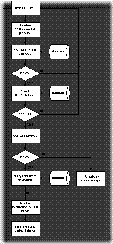

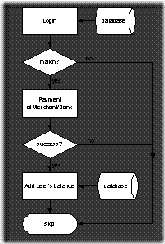
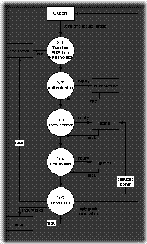
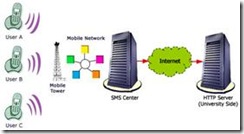
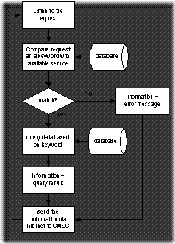

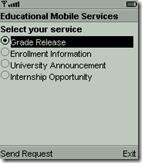

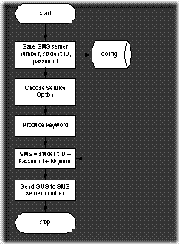


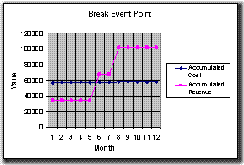


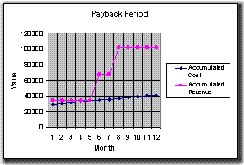




No comments:
Post a Comment